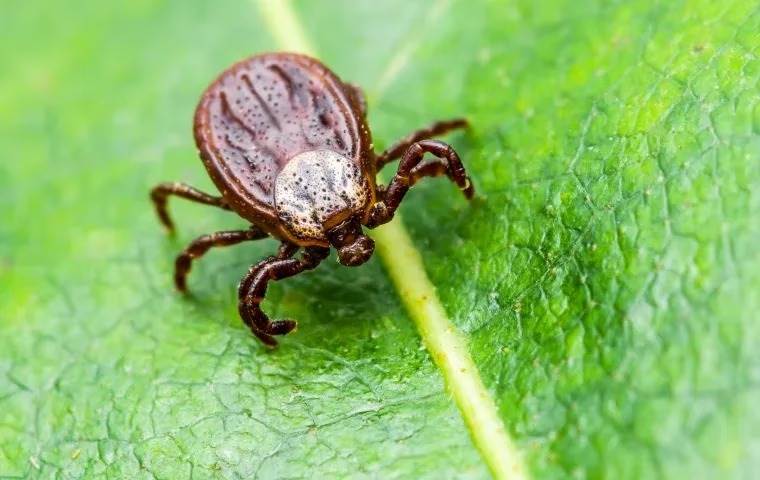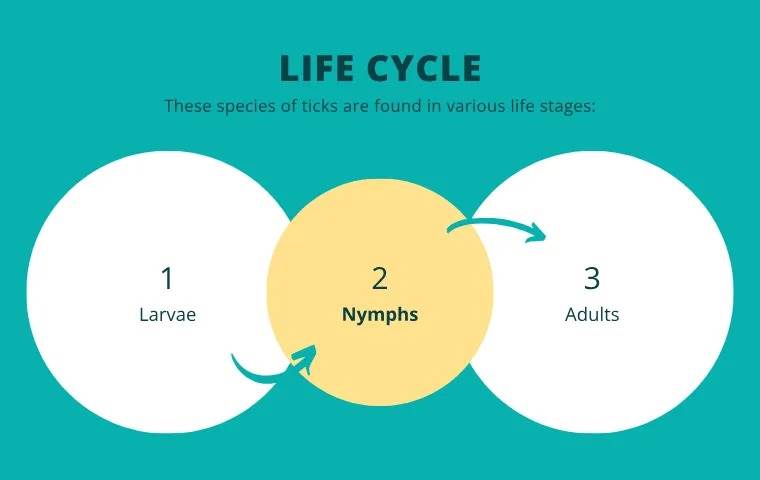Are There Ticks in Miami? Here’s What to Know

Ticks are prevalent in many parts of the United States, including Miami, Florida. Despite the city's bustling urban landscape, ticks find suitable habitats in the surrounding natural environments.
Got ticks? Keep reading to learn about the different types of ticks in Miami, as well as how to remove a tick properly and when to seek medical treatment in the case of a bite.
Key Takeaways
- Miami's warm, humid climate is home to various tick species, including the Black-legged tick, the Lone Star tick, the Brown dog tick, the American dog tick, and the Gulf Coast tick.
- Ticks in Miami thrive in wooded areas, grasslands, and near regions with high rodent or wildlife activity, posing risks in both rural and urban fringe areas.
- Ticks are vectors for serious diseases, highlighting the importance of awareness and prevention.
- Effective tick prevention in Miami involves personal measures, pet protection, and collaborative community efforts.
- Miami's local health organizations and Parks and Recreation Department are actively engaged in tick population monitoring and public awareness campaigns.
What Are the Types of Ticks in Miami?
Ticks, a parasitic arachnid, are prevalent in the Miami area, flourishing in its warm, humid climate. These pests come in different species, thriving outdoors during tick season.
Common Name | Scientific Name | Description |
Black-legged tick or Deer tick | Ixodes scapularis | Associated with Lyme disease and southern tick-associated rash illness (STARI). |
Lone star tick | Amblyomma americanum | Recognizable by the white spot on its back, it is aggressive and known to transmit diseases to humans and animals. |
Brown dog tick | Rhipicephalus sanguineus | Prefers dogs as hosts and can be found in homes and kennels, transmitting several diseases. |
American dog tick | Dermacentor variabilis | Known for spreading Rocky Mountain spotted fever, it commonly attaches to dogs and humans. |
Gulf Coast tick | Amblyomma maculatum | Found in coastal areas, it is a vector for Rickettsia parkeri rickettsiosis, a form of spotted fever. |
Life Cycle

These species of ticks are found in various life stages:
- Larvae: Tiny and newly hatched larvae are sometimes called seed ticks. They have six legs and are often no larger than a pinhead.
- Nymphs: Nymphs are larger, with eight legs, but still less than 2 mm. They're more active and can transmit diseases to humans and pets.
- Adults: They are easier to spot but also more dangerous. They seek larger hosts to feed and mate. Adult females can lay thousands of eggs.
Where Do Ticks Live in Miami, FL?
Tick populations often concentrate in different Miami hotspots.
- Wooded Areas: Dense forests and wooded areas provide ample shade and humidity for ticks. These areas also host a variety of wildlife, serving as a primary food source for ticks.
- Grasslands: Open fields and grassy areas are prime spots for ticks to latch onto passing hosts. The tall grasses offer protection and a vantage point to attach to animals and humans easily.
- Areas with High Rodent or Wildlife Activity: Regions with abundant wildlife or rodent populations support tick survival by offering consistent blood meals.
- Parks and Neighborhoods Bordering Natural Habitats: The edges of parks and residential areas adjacent to natural settings are transitional zones. These areas blend urban and natural elements.
- Climate Change-affected Zones: As climate change alters ecosystems, tick populations adapt and can expand into new areas, including urban and suburban settings in Miami.
Why Are Ticks a Problem?
In Miami, ticks pose real health risks. The most common tick-borne diseases transmitted by these tiny critters are Lyme disease, ehrlichiosis, and Rocky Mountain spotted fever.
While specific numbers for Miami might be elusive, the Centers for Disease Control and Prevention (CDC) provides data at the state level.
In South Florida, like Fort Lauderdale, tick-borne diseases are less common than in some other parts of the United States.
However, this doesn't eliminate the risk of encountering the following diseases.
Lyme Disease
Lyme disease can cause symptoms like fever, joint pain, muscle pain, and fatigue. When caught early, antibiotics can effectively treat Lyme disease.
However, without prompt treatment, the disease can lead to more serious complications.
Ehrlichiosis
Another example of tick-borne disease, ehrlichiosis, can result in symptoms similar to Lyme and usually require antibiotic treatment.
It's not as well-known as Lyme disease, but it's equally important to seek medical attention if bitten.
Rocky Mountain Spotted Fever (RMSF)
It stands out due to the characteristic rash it can cause alongside high fever. RMSF can be severe or even fatal if not treated with antibiotics in the first week of symptoms.
Babesiosis
Babesiosis is a condition caused by microscopic parasites that infect red blood cells.
Typically transmitted by ticks, it can cause symptoms ranging from mild to severe, including:
- Fever
- Chills
- Sweats
- Body aches
- Fatigue
In severe cases, babesiosis can cause hemolytic anemia.
Anaplasmosis
It is another tick-borne disease caused by the bacterium Anaplasma phagocytophilum. Symptoms include:
- Fever
- Headache
- Muscle pain
- Malaise
Like other tick-borne diseases, it generally requires treatment with antibiotics.
How to Prevent Tick-Borne Diseases
Understanding how to safeguard yourself and your pets from ticks is essential in Miami and other tick-prone areas.
Personal Measures
Ticks can transmit diseases, so it's important to protect yourself. Here are some simple yet effective strategies to keep ticks at bay.
Personal Measure | Details |
Use Tick Repellent | Apply a repellent containing DEET, picaridin, or IR3535 to the exposed skin, following the product's instructions. |
Opt for Treated Clothing | Wear clothing treated with permethrin when outdoors for an additional barrier against ticks. |
Perform Regular Tick Checks | Inspect all parts of your body for ticks, focusing on hidden areas like underarms, ears, belly button, behind knees, between legs, around the waist, and hair. |
Shower Soon After Outdoor Activities | Showering within two hours of coming indoors helps to wash off unattached ticks and provides a good opportunity to check for ticks. |
Dress Smartly | Wear long-sleeved shirts and light-colored long pants tucked into socks or boots. |
Pet Protection
You should also protect your pets as ticks can cause them serious illnesses. Here’s how you can keep ticks away from your furry friends.
- Consult a Veterinarian: Obtain advice about tick protection products and consider a tick preventive vaccine if recommended.
- Regular Pet Checks: Inspect pets for ticks daily, especially after walks or playtime outside.
- Tick-Appropriate Products: Use tick prevention products such as collars, sprays, or topicals as directed by a veterinarian.
- Avoid Tick Habitats: Keep pets away from high grass and wooded areas where tick exposure is more likely.
- Prompt Removal: Safely remove ticks from pets with tweezers as soon as they are spotted to minimize the chance of disease transmission.
How to Remove and Treat Ticks
When you find a tick attached to your skin, remove it promptly by following these tick-removal steps.
- Use fine-tipped tweezers: Get as close as possible to the skin.
- Pull with steady pressure: Do not twist or jerk the tick.
- Disinfect the area: Rubbing alcohol or soap and water should be used.
In case of a tick bite, you should watch for symptoms of tick-borne diseases. Symptoms can appear within a few days to weeks and include:
- Fever
- Chills
- Aches
- Rash
If a rash that looks like a bullseye or fever develops after removing a tick, you should see a healthcare provider right away. Don’t wait to see if symptoms improve or worsen.
When to Call Professional Pest Control
Tackling a tick problem on your own can be difficult. You ought to reach out to professional pest control companies when you notice these signs:
- Persistent Presence: If you find ticks regularly despite your efforts to eliminate them, it's time to bring in the experts.
- Pets Are Affected: If your furry friends are constantly scratching or you spot ticks on them, a professional can help protect your pets.
- Lawn and Garden Infestation: When ticks have taken over outdoor areas, specialists can treat these spaces to reduce the tick population.
After a Tick-Borne Illness: If someone has been diagnosed with a tick-borne disease, professional exterminators can ensure that your home environment doesn't pose a further risk.
